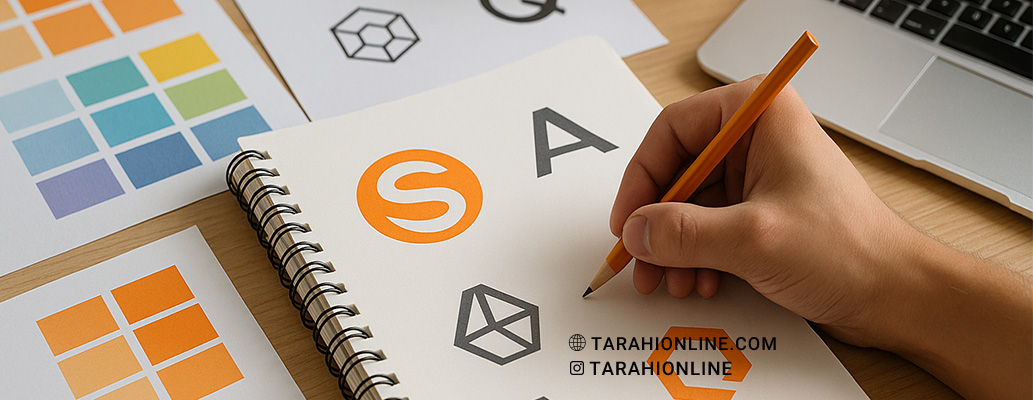
Logo design is one of the most challenging and creative aspects of graphic design. A successful logo not only conveys a brand’s identity but also leaves a lasting impression on its audience. But how do professional designers come up with innovative and impactful ideas for logos? This article explores the creative process that professionals use to generate logo ideas, from initial research to creative techniques and finalizing concepts.
Why Idea Generation for Logo Design Matters
A logo is the visual face of a brand and should:
-
Be unique: Distinguish the brand from competitors.
-
Be purposeful: Communicate the brand’s message and values.
-
Be versatile: Perform well in print, digital, and various sizes.
-
Be timeless: Remain relevant and effective over time.
Strong idea generation helps designers create logos that are not only visually appealing but also functional and aligned with the brand’s identity. Professional designers rely on structured processes and creative techniques to achieve this goal.
Tools and Resources Needed for Idea Generation
To start brainstorming, designers need the following tools and resources:
-
Notebook or digital tool: For jotting down initial ideas (e.g., Moleskine or apps like Notion).
-
Design software: Adobe Illustrator, Figma, or Canva for sketching early concepts.
-
Inspiration sources: Websites like Behance, Dribbble, or Pinterest.
-
Brand guidelines: Information about the brand’s identity, values, and audience.
-
Research tools: Internet access for analyzing competitors and design trends.
The Idea Generation Process of Professional Designers
1. Research and Understanding the Brand
Professional designers begin with in-depth research:
-
Understand the brand’s identity: Study the brand’s mission, vision, and values. Is the brand modern, traditional, luxurious, or minimalist?
-
Identify the target audience: Analyze who the brand’s customers are (age, gender, lifestyle).
-
Analyze competitors: Review competitors’ logos to identify gaps and opportunities for differentiation.
-
Gather keywords: Create a list of words related to the brand (e.g., “innovation,” “trust,” “energy”) to spark inspiration.
Example: For an organic coffee brand, a designer might focus on words like “nature,” “warmth,” or “tradition” and consider visuals like coffee beans or leaves.
2. Seeking Visual Inspiration
Designers draw from diverse sources to ignite creativity:
-
Nature and surroundings: Organic shapes like leaves, waves, or mountains can inspire.
-
Art and architecture: Art styles (e.g., Art Deco or minimalism) or local architecture.
-
Design websites: Platforms like Behance, Dribbble, or LogoLounge for trend exploration.
-
Culture and history: Cultural elements or traditional symbols related to the brand.
-
Everyday objects: Sometimes, a simple object like a pen or cup can spark a creative idea.
Tip: Professional designers avoid direct copying and instead use these sources to create unique concepts.
3. Brainstorming
Brainstorming is a critical step:
-
Mind Mapping: Designers place brand-related keywords at the center and branch out with related ideas. For a tech brand, words like “connection,” “circuit,” or “future” might lead to symbols like interconnected lines or circles.
-
Initial Sketches: Quickly sketching ideas on paper or a tablet without focusing on details.
-
6-3-5 Technique: In this method, six people write three ideas each in five minutes and share them (usable in teams or even solo with adaptations).
4. Using Creativity Techniques
Designers employ specific techniques to unlock creativity:
-
SCAMPER Technique: Substitute, Combine, Adapt, Modify, Put to another use, Eliminate, and Reverse design elements.
-
Typography Exploration: Experimenting with fonts (e.g., Sans-serif for modern, Serif for classic) to evoke the brand’s vibe.
-
Playing with Shapes: Combining geometric shapes (e.g., circles for unity, squares for stability) to create simple yet meaningful symbols.
-
Using Negative Space: Creating hidden images within the logo (e.g., the arrow in the FedEx logo).
5. Experimenting with Color and Form
-
Color Psychology: Choosing colors based on their emotional impact (e.g., blue for trust, red for energy) and brand alignment.
-
Form and Balance: Testing symmetrical or asymmetrical shapes for visual harmony.
-
Versatility: Ensuring the logo looks great in monochrome, small, or large formats.
Example: The Apple logo uses a simple apple with negative space (the bite) that works across scales and colors.
6. Feedback and Refinement
-
Present to the team or client: Designers share initial concepts and gather feedback.
-
Test in different contexts: Check the logo on business cards, websites, or packaging to ensure functionality.
-
Refine based on feedback: Adjust colors, fonts, or details to improve the concept.
Pro Tips for Successful Idea Generation
-
Take a break from the brand: A short pause or working on another project can help the mind generate fresh ideas.
-
Set constraints: For example, use only geometric shapes or two colors to spark creativity within boundaries.
-
Draw from unexpected sources: Customer stories, brand history, or even random objects can inspire.
-
Stay aware of trends: Explore trends like minimalism or gradients, but avoid fleeting fads.
-
Collaborate with others: Discussions with other designers or even non-designers can offer new perspectives.
Common Challenges and Solutions
-
Lack of inspiration: If ideas aren’t flowing, explore visual sources (e.g., Pinterest) or take a short walk.
-
Repetitive ideas: Review competitors’ logos to avoid unintentional similarities.
-
Overly complex ideas: If concepts feel cluttered, eliminate details and focus on simplicity.
-
Misalignment with the brand: Always cross-check ideas with the brand’s identity and values.
Professional designers generate logo ideas through a blend of research, creativity, and structured processes. From deeply understanding the brand and its audience to leveraging brainstorming techniques and experimenting with color and form, each step contributes to crafting a logo that’s both beautiful and functional. By drawing inspiration from diverse sources, using the right tools, and embracing feedback, you too can create ideas that perfectly represent a brand.
The Tarahi Online graphic and logo design team, with over ten years of experience in professional graphic and logo design, is ready to assist you and bring your ideas to life. Contact us to submit your request or place an order.
